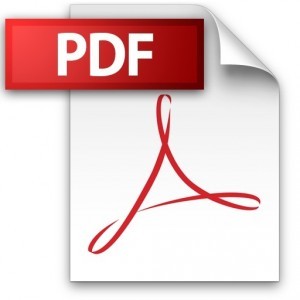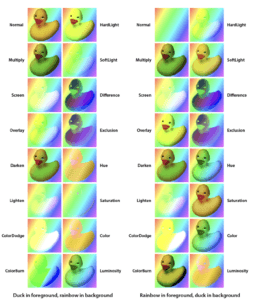 The PDF File Format includes some very sophisticated features. One of the most interesting ones is the Blend Mode (introduced in PDF version 1.4).
The PDF File Format includes some very sophisticated features. One of the most interesting ones is the Blend Mode (introduced in PDF version 1.4).
What is a Blend Mode?
Blend Mode controls how new content is painted and allows the new pixels to be affected by what has already been drawn.
In Normal mode, any new drawing will erase existing items that it draws over. So if I draw a RED box on a page, anything underneath will disappear. But wouldn’t it be useful if the new RED box could ‘interact’ (or blend) with whatever is on the page? This is what Blend Modes allow! Here is an example from the PDF File Specification.
How is it set?
Blend Mode is set using the BM command in the GraphicsState and the default value is Normal.
Other possible values are Compatible (actually the same as Normal), Multiply, Screen, Overlay, Darken, Lighten, ColorDodge, ColorBurn, Hardlight, SoftLight, Difference, Exclusion.
How does it work?
When a pixel is drawn on the page, a formula is applied as defined in Section 11.3.5 of the PDF File Specification which produces a final blended result based on the current value and the new value.
How it works can be dependent on the exact colorspace used.
Final Comments
Blend Modes allow to create some very interesting effects in compositing (both in and beyond PDF). If you are doing any form of drawing, they are worth knowing about and experimenting with.
Our software libraries allow you to
| Convert PDF files to HTML |
| Use PDF Forms in a web browser |
| Convert PDF Documents to an image |
| Work with PDF Documents in Java |
| Read and write HEIC and other Image formats in Java |

One Reply to “What are Blend Modes in PDF files?”
Comments are closed.